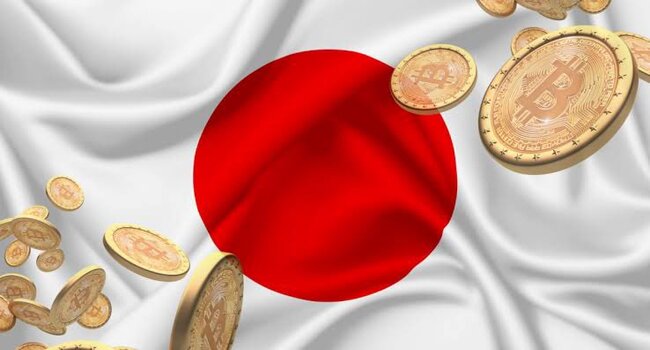U.S., Vietnam to finalize zero duty trade deal as 20% tariffs stays on most products
The United States and Vietnam will finalize a new trade agreement in the coming weeks. The deal keeps a 20% tariff on most goods shipped from the country to the United States, while allowing some products to move toward zero duty later.
A joint statement released Sunday said both sides have agreed on a framework for “reciprocal, fair and balanced” trade. In return, the country will provide what the statement called “preferential access” for most American goods.
The current tariff level was first announced in July, when President Donald Trump said the United States would apply a 20% charge on many products from the country and a 40% levy on goods routed through the country from elsewhere.
Last year, the country recorded a trade surplus of $123 billion with the United States, its largest export market. The new agreement keeps the tariff rate at 20% for now, but Washington and Hanoi will identify items where the rate can fall to zero.
According to the statement, the change “will provide both countries’ exporters unprecedented access to each other’s markets.”
Non‑tariff rules come under review
The statement said both sides will work to finish legal steps, sign the agreement, and prepare for it to enter into force. It also said the United States and Vietnam will work on non‑tariff barriers.
The country agreed to recognize U.S. motor vehicle safety and emissions standards. That means vehicles built to American rules can be sold there without new testing. It also agreed to address import licensing for U.S. medical devices and to streamline regulatory approvals for U.S. pharmaceutical products.
The statement added that the country will fully implement obligations under certain international intellectual property treaties.
The statement also said:
Duty evasion concerns have grown in recent years, especially involving goods that pass through the country from third countries before entering the United States. The framework aims to limit that practice through new verification steps and data cooperation between customs agencies.
The focus on supply chain resilience reflects heavy trade flows between both economies. Bilateral trade in the first nine months of this year reached $126.4 billion, up 27% from a year earlier, according to customs data. In the same period, the country’s trade surplus with the United States increased to $99.1 billion from $77.2 billion a year earlier.
Airline purchase and agricultural deals expand U.S. export reach
To reduce the trade gap, the country has recently agreed to buy more American goods. Vietnam Airlines (V3), the national carrier, will purchase 50 Boeing aircraft in a deal valued at more than $8 billion, according to the White House.
The statement also said companies from the country signed twenty memorandums of understanding with American firms to buy agricultural commodities worth an estimated $2.9 billion.
The agreement leaves tariff adjustments for later. For now, only the framework is settled: 20% stays, a list of possible zero‑duty goods will be drafted, and access for American products will expand. The plan also includes domestic procedures in both countries before final entry into force. Officials said this process will take shape “in the coming weeks”, with signing preparations already underway.
The joint document repeated that the goal is to maintain what it described as a “reciprocal, fair, and balanced” trading relationship. The next step is selecting which goods move into the zero‑duty category.
The process will involve trade agencies, product‑specific assessments, and formal notice. No timeline was released for those product lists, and no sectors were named in advance.
Get seen where it counts. Advertise in Cryptopolitan Research and reach crypto’s sharpest investors and builders.
You May Also Like

Humans Are the Improbability Drive AI Can’t Copy

JPYC Launches Japan’s First Yen-Denominated Stablecoin to Drive Digital Payment Growth
Highlights: Japan’s JPYC Inc. launches yen-based stablecoin to modernize payments and strengthen its position in digital finance. Analysts predict JPYC will accelerate Japan’s transition toward a fully digital economic ecosystem. The stablecoin seeks to enhance transaction efficiency and support blockchain-based business growth. On October 27, Japanese fintech firm JPYC Inc. officially announced the launch of the country’s first stablecoin pegged to the Japanese yen, JPYC. It marks a small but meaningful step in a country where most consumers still rely on traditional payment methods such as cash and credit cards. The rollout follows approval from Japan’s Financial Services Agency. Growing institutional interest also signals a shift in the country’s long-standing cash-based economy. JPYC is fully backed by yen deposits and Japanese government bonds. It complies with Japan’s Payment Services Act and maintains 100% reserves. The stablecoin is pegged 1:1 to the Japanese yen and operates on major blockchains such as Ethereum, Avalanche, and Polygon. CEO Noritaka Okabe said the company wants to support innovation by offering startups lower transaction and settlement costs. He added that better global connectivity could help everyone and that the company is open to new partnerships. JPYC Inc announced the official launch of its yen-denominated stablecoin, JPYC, along with the release of its dedicated issuance and redemption platform, JPYC EX. The stablecoin is pegged 1:1 to the Japanese yen and fully backed by bank deposits and government bonds. Initial… — Wu Blockchain (@WuBlockchain) October 27, 2025 User Access and Growth Targets The company said users can buy JPYC on the JPYC EX platform after verifying their identity with the My Number card, Japan’s national ID. JPYC Inc. plans to reach 10 trillion yen ($65.4 billion) in circulation within three years. It also aims to add more blockchains and partner with more businesses. For comparison, USDT, the largest stablecoin, has about $183.2 billion in supply. Several Japanese firms plan to integrate JPYC into their operations, the company confirmed. Fintech developer Densan System is creating payment systems for retail and e-commerce platforms featuring JPYC. Meanwhile, Asteria will add JPYC support to its enterprise data integration software, used by more than 10,000 businesses. Additionally, crypto wallet provider HashPort plans to enable JPYC transactions on its platform. With its launch, JPYC becomes the first major stablecoin not tied to the U.S. dollar but backed by a strong economy. This move may change how money flows across Asia. Like U.S. stablecoins that increased Treasury demand, Japan’s version could boost JGB demand and add diversity to the market. The global stablecoin market is now over $286 billion, with nearly all linked to the dollar. Digital Payment Shift in Japan Japan’s use of digital payments has grown, which shows a big shift from cash to electronic payments. JPYC aims to speed up this growth by offering a simple and low-cost digital option. The company will waive transaction fees at first and earn from interest on Japanese government bond holdings. Meanwhile, Japan’s three major banks, Sumitomo Mitsui, Mitsubishi UFJ, and Mizuho, plan to launch a joint yen-based stablecoin system on October 31 for corporate settlements through MUFG’s Progmat platform. Japan’s Major Banks Launch Yen-Backed Stablecoin Partnership Japan’s financial sector is taking significant steps toward integrating cryptocurrency technologies, with three major banks planning to jointly issue a yen-pegged stablecoin. This initiative…… pic.twitter.com/WR99AIb4ah — Crypto Breaking News (@CryptoBreakNews) October 17, 2025 Bank of Japan Deputy Governor Ryozo Himino recently said that stablecoins could become an important part of the global payment system and may partly replace traditional bank deposits. Experts believe yen-backed tokens could grow in use over the next two to three years. They may also play a role in areas like decentralized finance, tokenized assets, and cross-border payments. eToro Platform Best Crypto Exchange Over 90 top cryptos to trade Regulated by top-tier entities User-friendly trading app 30+ million users 9.9 Visit eToro eToro is a multi-asset investment platform. The value of your investments may go up or down. Your capital is at risk. Don’t invest unless you’re prepared to lose all the money you invest. This is a high-risk investment, and you should not expect to be protected if something goes wrong.
